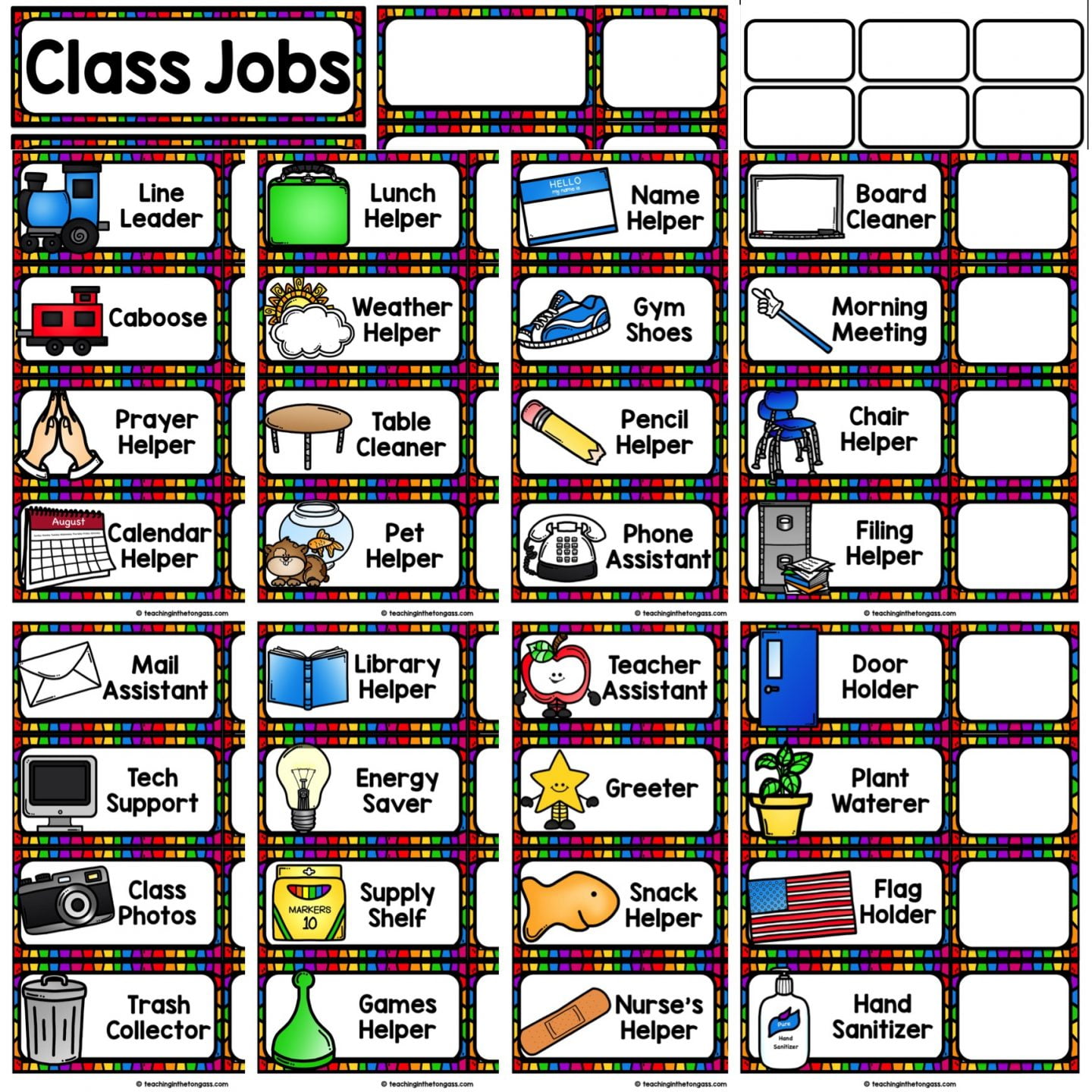
Introduction
A kindergarten classroom jobs chart is an essential tool for organizing and managing responsibilities among young students. It serves as a visual representation of the various tasks and roles assigned to each student in the classroom. This article will discuss the importance of implementing a jobs chart in a kindergarten setting, the benefits it offers to both students and teachers, and provide practical tips for creating and using a jobs chart effectively.
Benefits of a Kindergarten Classroom Jobs Chart
There are several benefits to using a jobs chart in a kindergarten classroom:

1. Teaches Responsibility: Assigning specific tasks to students helps them develop a sense of responsibility and accountability.
2. Promotes Independence: By assigning jobs, students learn to complete tasks on their own, fostering independence and self-reliance.
3. Encourages Teamwork: Students work together to accomplish classroom tasks, promoting teamwork and collaboration.
4. Builds Life Skills: The jobs chart introduces students to various life skills such as organization, time management, and problem-solving.
5. Reduces Teacher Workload: Delegating certain responsibilities to students lightens the teacher's workload and allows them to focus on instruction and individual support.
Creating a Kindergarten Classroom Jobs Chart
When creating a jobs chart for your kindergarten classroom, consider the following tips:

1. Identify Suitable Jobs: Determine age-appropriate tasks that students can handle independently, such as line leader, door holder, or book organizer.
2. Assign Rotating Jobs: Rotate job assignments among students regularly to give everyone an opportunity to experience different responsibilities.
3. Use Visuals: Use pictures or icons alongside job titles to help non-readers understand their assigned tasks.
4. Make it Interactive: Involve students in the creation of the jobs chart by allowing them to contribute ideas or decorate it with their artwork.
5. Keep it Simple: Limit the number of jobs on the chart to avoid overwhelming students, especially in the early stages of implementation.
Using a Kindergarten Classroom Jobs Chart
Once you have created a jobs chart, follow these tips to ensure its effective use:

1. Explain the Jobs: Introduce each job to the students, explaining their responsibilities and demonstrating how to perform the tasks.
2. Rotate Jobs Regularly: Change job assignments on a schedule, ensuring every student gets a chance to experience different roles.
3. Monitor and Provide Feedback: Observe students as they carry out their assigned tasks and provide feedback and guidance when necessary.
4. Celebrate Job Well-Done: Recognize and appreciate students' efforts by acknowledging their successful completion of their assigned jobs.
5. Review and Reflect: Regularly review the effectiveness of the jobs chart and make adjustments as needed based on student needs and classroom dynamics.